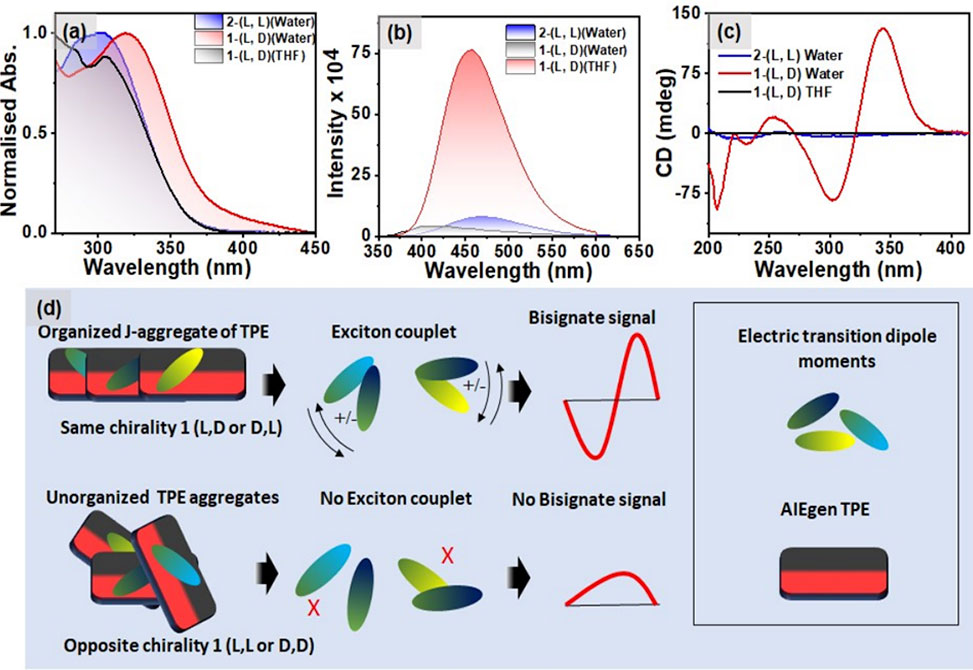APS Research & News
Polarized Luminescence
This article reflects work in the Bhattacharya Lab
Circularly polarized luminescence, CPL, is gaining interest across various disciplines, including materials science, pharmaceuticals, and sensing technologies. Organic molecules, due to their ease of synthesis and reduced toxicity, are a focus for achieving high dissymmetry values, glum, in CPL.
In work published in Chemical Science, researchers in the Bhattacharya lab from the School of Applied and Interdisciplinary Sciences, Indian Association for the Cultivation of Science, Kolkata, India, present a low molecular weight molecule, 1, a dipeptide, Ala–Phe, covalently linked with tetraphenyl-ethylene, TPE, an Aggregation-Induced Emission luminophore, AIE-gen.
Varying the stereochemistry of amino acid chiral centers, the lab members synthesized homochiral 1-(L, L) & 1-(D, D) and heterochiral 1-(L, D) and 1-(D, L). In aqueous media, these molecules exhibit aggregation-induced chirality at the TPE chromophore. Heterochiral systems form sheet-like structures, displaying a bisignate induced circular dichroism signal and a good glum value for CPL [7.5 (±0.04) × 10−3]. Conversely, homochiral systems adopt fibrillar morphology, exhibiting a monosignate induced circular dichroism signal with a lower dissymmetry value for CPL [1.3 (±0.05) × 10−3].
This study introduces the concept of chiroptical amplification, emphasizing enhanced CPL through heterochiral peptide-induced CPL compared to its homochiral counterpart, with an ON and OFF CPL signal at low and high temperature respectively.

Published here on Sept. 16, 2024
Title: Enhanced Circularly Polarized Luminescence Attained via Self-Assembly of Heterochiral as Opposed to Homochiral Dipeptides in Water
Authors: Sayan Bera, Umesh, and Santanu Bhattacharya
Citation: Chem. Sci., 2024, 15, 13987-13997